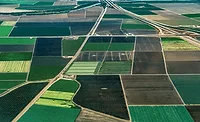Is blockchain the answer to costly food recalls?

Grocery giant Kroger had enough of a crisis to deal with when it pulled frozen berries possibly contaminated with Hepatitis A last year. But the sting of the Food and Drug Administration recall was compounded even further. During the recall, it was discovered berries from the same supplier were infected with the same contagious liver disease in 2013, when more than 150 people were sickened after buying their product from Costco stores. Both Costco and Townsend Farms faced further scrutiny while fighting lawsuits that resulted from sick customers even five years later.
How does such a similar threat emerge nearly six years later, from the same supplier? Especially in a time where one in six Americans are sickened from contaminated food each year, according to the Centers for Disease Control. And while the vast majority of recalls are not linked to any illnesses, customers can grow weary of a grocer who is frequently pulling food from the shelves. It also puts a dent in grocer’s revenues. A 2011 survey found more than half of grocers said they were impacted by a recall in the past 5 years, and 18 percent of those said the lost sales amounted to between $30 and $99 million.
It is clear that both suppliers and grocers have serious work to do to ensure the health and safety of their customers. While it is unlikely that foodborne illnesses will ever be fully eradicated, the six year gap between the Townsend Foods recalls is painful. In order to avoid making similar costly mistakes, suppliers and grocers must get serious about investing in technology that can help improve the safety of food in the supply chain.
Emerging tech like blockchain is key to greater transparency in our food supply
When last year’s romaine lettuce recalls came to light, there was a scramble to locate the point of origin within the supply chain. Tons of the greens filled dumpsters out of an abundance of caution, and all the while, grocers and suppliers lost untold sums in unsold products. However, locating the source of contamination and limiting the need for sweeping recalls is being made much easier thanks to transparency made possible by blockchain and enterprise resource planning (ERP) technology.
The promise of blockchain in the food industry is revolutionary. With this technology in place, produce is assigned a permanent, secure and unalterable transaction record. This means every touchpoint—from the ground to grocery shelf and everything in between—can be tracked with certainty. When a possible contamination occurs, the expiration date, batch number, farm of origin and a host of other data points are able to be identified, meaning diseased or contaminated food can be caught more quickly and accurately.
Combined with ERP solutions at each point in the supply chain, blockchain technology helps create an end-to-end view of the entire journey of a shipment. This means recalls no longer need to be reactive. When temperature is included in the blockchain record, grocers can proactively determine the safety of a given meat shipment, for example. If the meat’s temperature rises above 37 degrees Farenheit during transit, for example, the product can be kept from ever hitting the deli counter. In the case of Townsend Farms’ berries, grocers could pull up their inventory of products from the company to determine if they have stocked contaminated products—and quickly alert other locations to take action.
The ability to proactively monitor the food supply chain means a much safer future for consumers when it comes to foodborne illnesses. In order for this to be a reality, grocers and suppliers should embrace technology solutions and partners who are exploring blockchain-based technology, and work to get their operations ready for more transparency. Understanding how to make each stop in the supply chain—from earth to shelf—more visible is key to keeping consumers happy and healthy.
Looking for quick answers on food safety topics?
Try Ask FSM, our new smart AI search tool.
Ask FSM →








